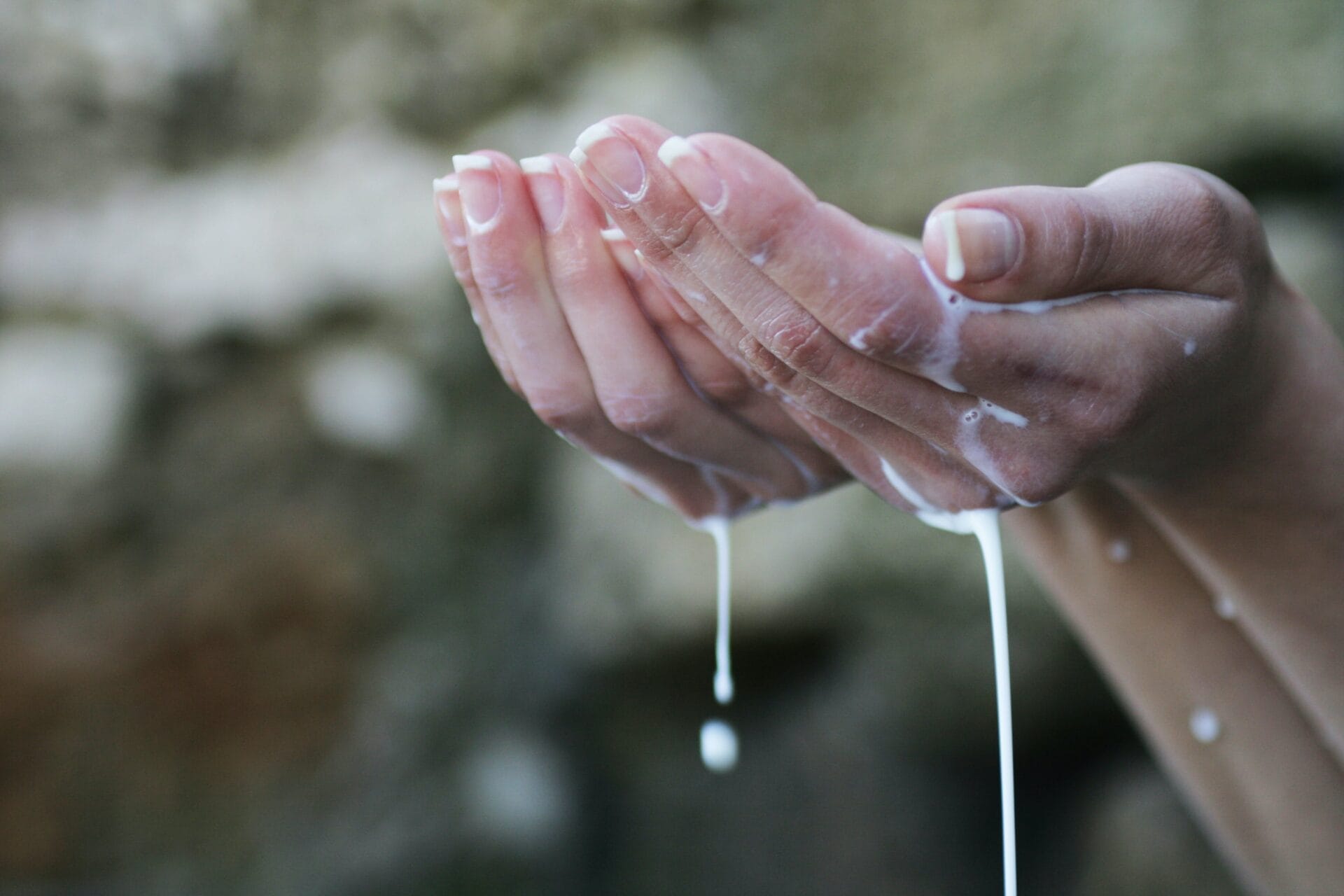If you have noticed water dripping from your vent, you may be wondering why this is happening. This can be a concerning issue, as water dripping from your vent could indicate a serious underlying problem. It is important to understand why your vent is dripping water in order to determine the best course of action. This article will provide an overview of the possible causes of a dripping vent and the steps you can take to remedy the issue.A vent dripping water is usually caused by condensation forming on the inside of the vent pipe. As warm, moist air from the home rises up through the vent, it cools and condenses on the inside walls of the pipe. This condensation forms droplets of water that drip out of the bottom of the pipe.
Common Reasons for a Dripping Vent
A dripping vent can be a sign of various problems with the air conditioning system. Common causes of a dripping vent include blocked condensate drain lines, clogged filters, and malfunctioning evaporator coils. It is important to address these issues as soon as possible, in order to prevent further damage.
Blocked condensate drain lines are one of the most common causes of a dripping vent. The condensate drains collect moisture from the air and then transport it away from the air conditioning unit. If the lines become blocked or clogged, the water will overflow out of the vent. The blockage can be caused by debris or other obstructions in the line, which must be removed in order to restore proper function.
Clogged filters are another common cause of a dripping vent. Air conditioning filters trap dust and other contaminants from the air, preventing them from entering the system. Over time, these filters can become clogged with dirt and debris, resulting in poor airflow and an increased risk of moisture leakage into the vents.
Finally, malfunctioning evaporator coils can also lead to a dripping vent. Evaporator coils help to cool and dehumidify incoming air before it is released into your home or office space. If these coils become dirty or damaged, they may not be able to absorb enough moisture from the air, causing it to leak out through your vents. It is important to have these components checked regularly for signs of damage or wear.
In conclusion, there are several common reasons for a dripping vent that should be addressed as soon as possible in order to prevent further damage. Blocked condensate drain lines, clogged filters, and malfunctioning evaporator coils are all potential culprits that should be inspected by an experienced technician if you notice any signs of water leakage around your vents.
How to Identify Where the Water is Coming From
When you find water coming into your home, it can be difficult to figure out where it is coming from. It’s important to identify the source of the water as soon as possible so that you can take steps to repair the issue and prevent further damage. There are a few steps that you can take to help identify where the water is coming from.
First, check for visible signs of a leak. This could include dripping faucets, wet spots on walls or floors, discoloration on walls or ceilings, or a musty smell in the air. If you don’t see any of these signs, you can try turning off all of your fixtures and appliances and then checking your water meter for any indication of water usage while everything is off. If you notice an increase in usage when nothing is running, this could be an indication that there is a slow leak somewhere in the home.
An additional way to determine where the water is coming from is by listening for any unusual sounds or vibrations that may indicate a hidden leak. You may also want to check near any appliances that use water such as dishwashers or washing machines for signs of water damage or leaks.
If you have determined that there may be a hidden leak somewhere in your home but are unable to locate it yourself, it may be best to contact a professional plumber who has the tools and experience necessary to locate and repair the issue. They will be able to easily identify where the water is coming from and provide advice on how best to fix it.
It’s important not only identify where the water is coming from but also take steps to prevent further damage and repair any existing issues as soon as possible. Following these steps will help ensure that your home stays safe and dry!
Assess Your Home’s Ventilation System
Assessing your home’s ventilation system is an important step in ensuring that your living space is safe and comfortable. Proper ventilation helps to remove stale air and moisture, while also bringing in fresh air, which can help to reduce the risk of mold and mildew growth. In addition, it can also help to improve the efficiency of your heating and cooling systems, as well as reduce energy costs. To assess your home’s ventilation system, there are a few steps you should take.
The first step is to check for any visible signs of damage or deterioration in the ventilation system. Look for signs of rust or corrosion on vents and registers, as well as any gaps or cracks in the ductwork. If you find any signs of damage or deterioration, it may be time for repairs or replacement.
Next, make sure that all of the vents and registers are open so that air can flow freely throughout your home. Many people forget to open these when they move into a new home, so it’s important to check periodically. Also make sure that all air filters are clean and free of debris. Clogged filters can impede airflow and reduce efficiency.
Finally, check to ensure that all exhaust fans are working properly and venting outside the home rather than into an attic or crawlspace. This will help ensure that moisture-laden air is being vented outside rather than circulating inside the home, which can contribute to mold growth and other problems.
By taking these steps to assess your home’s ventilation system regularly, you can help ensure a safe, comfortable environment for you and your family while saving on energy costs at the same time.
Check for Leaks in the Ducts
It is important to check for leaks in the ducts of your HVAC system. Leaks can be caused by a variety of things, such as loose connections, cracks, or poor insulation. If left unchecked, these leaks can lead to higher energy bills and decreased air quality. To check for leaks in your ducts you should first inspect all of the visible connections and seams for any signs of wear or damage. If any are found they should be sealed with mastic or foil tape and then tested for air tightness with a pressure gauge. You should also check the insulation around the ducts to see if it is intact and free from any holes or tears. If necessary, replace any damaged insulation with new material that is rated for use in HVAC systems. Finally, it is important to have your ducts professionally inspected and cleaned on a regular basis to ensure that they are working optimally and free from any hidden problems that could lead to further issues down the line.
Catching any potential problems early on can save you time and money in the long run, so make sure to thoroughly inspect your HVAC system regularly for any signs of leakage.

Signs of Clogged Condensate Drains
Condensate drains are an important part of a HVAC system, as they help to remove built-up condensation and other moisture from the air. If the drain becomes clogged, it can cause serious problems for your air conditioning system. Knowing the signs of a clogged condensate drain can help you to identify and address any issues before they become too severe. Here are some signs to look out for:
The first sign is water leaking or pooling around the furnace or air handler. If you notice water accumulating in this area, it is likely that the condensate drain is blocked. You may also see water dripping from the ceiling near where the HVAC unit is located, which is another sign of a clogged drain.
You may also hear a loud gurgling noise coming from your HVAC unit when it is running. This noise can indicate that there is an obstruction in the condensate line, preventing it from draining properly. Additionally, if you notice any mold or mildew smells coming from your HVAC system, this could be an indication that there is a blockage in the condensate line.
If you spot any of these signs of a clogged condensate drain, it’s important to contact a professional HVAC technician as soon as possible. They will be able to diagnose and fix any issues with your drainage system before they cause further damage to your air conditioning system.
Clean Out the Dryer Lint Trap Regularly
Cleaning out the dryer lint trap is an often overlooked chore that can help your dryer run more efficiently and prevent a fire. It is important to regularly clean out the lint trap and exhaust hose of your dryer to keep it running safely and efficiently. Taking a few minutes every month to clean out the lint trap can help reduce the risk of a fire in your home, as well as increase the efficiency of your dryer.
The most important step in cleaning out your lint trap is to unplug the dryer before you start. Once it is unplugged, open the door and remove the lint trap. Take care not to pull on any wires when you are doing this or you could damage them. Once you have removed the lint trap, use a brush or vacuum attachment to remove any visible lint from it. Then take a damp cloth and wipe down both sides of the filter screen, making sure to get rid of any dust or dirt that has accumulated.
Once you have cleaned out the lint trap, you will need to clean out the exhaust hose as well. This is usually located behind or near your dryer, so make sure you know where it is before you start cleaning. Start by disconnecting the exhaust hose from both ends and then use a vacuum attachment or brush to remove any visible lint from inside it. Once again, make sure you don’t pull on any wires when doing this as this could cause damage. After cleaning out both ends of the exhaust hose, re-attach them and plug in your dryer again.
Cleaning out your dryer’s lint trap and exhaust hoses regularly will help keep your dryer running safely and efficiently for many years to come. Make sure to set aside some time each month to give these areas some attention so that they stay in good condition for as long as possible.
Make Sure the Exhaust Fan is Working Properly
It is important to ensure that the exhaust fan in your home or business is working properly. The purpose of an exhaust fan is to draw air out of your space and help improve air quality. This helps to reduce the buildup of moisture, odors, and other airborne contaminants that can be detrimental to your health.
If you notice that the air in your space is becoming stale or stuffy, it may be time to check the exhaust fan. Inspect all parts of the fan for any visible damage, such as broken blades, worn out bearings, or blocked vents. You should also check for any signs of excessive noise or vibration when running. If any of these issues are present, it’s important that you have the fan repaired or replaced as soon as possible.
In addition to regular inspections and maintenance, you should also make sure that you are using your exhaust fan correctly. If you have a large room with high ceilings, it’s important to install fans at multiple levels in order to ensure proper ventilation throughout the entire space. You should also make sure that you are running your exhaust fans for long enough periods of time in order to properly remove airborne contaminants from the room.
By taking these steps and ensuring that your exhaust fan is working properly, you can help keep your home or business safe and comfortable for everyone who enters it.

Conclusion
Water dripping from your vent could indicate a few different issues. If the water is coming from condensation, you can try sealing your air ducts and increasing ventilation in the space. If the water is coming from the AC, there may be an issue with the drain pan or drain line, and you should call a professional to come and take a look. Finally, if there is mold growth around your vents, you should consider hiring an expert to inspect and clean your HVAC system.
In any case, if you notice water dripping from your vents, it’s important to take action as soon as possible to prevent further damage to your home. By addressing the issue quickly, you can ensure that your home is safe and comfortable all year round.

